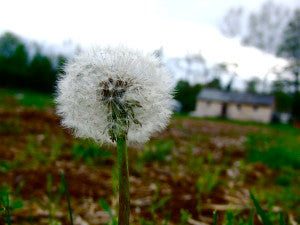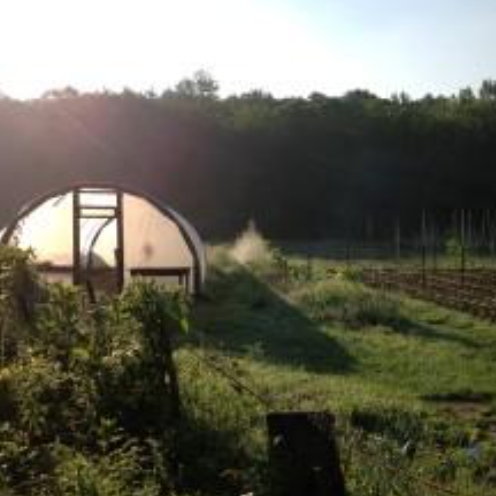 Spring cleaning is not only great for sweeping winter blues out of a cold-season-weary home, it is essential to a healthy and productive season in the garden. This March, spring took its time, arriving via tiny, quiet steps teased out through the month. But now, we are firmly in mud season, the streams are swollen with snow melt, skunk cabbage and flower bulbs are poking through the newly revealed soil, and birds have broken into endless song. It’s finally time to return to the garden! Here are four ways to get the garden ready for the growing season ahead:
Spring cleaning is not only great for sweeping winter blues out of a cold-season-weary home, it is essential to a healthy and productive season in the garden. This March, spring took its time, arriving via tiny, quiet steps teased out through the month. But now, we are firmly in mud season, the streams are swollen with snow melt, skunk cabbage and flower bulbs are poking through the newly revealed soil, and birds have broken into endless song. It’s finally time to return to the garden! Here are four ways to get the garden ready for the growing season ahead:
Take out the “trash:” Even the most meticulous vegetable gardener will return in spring to find things out of place. Branches that have fallen under snow weight, precariously leaning dead broccoli stalks holding onto the wet soil, dried weeds scattered about. Since most crops in a vegetable patch are annual and any self-seeding crops have already dropped their seeds, all stray organic matter should be moved to the compost pile so new plantings can be started from a clean slate. This is also the time to remove non-organic materials like last year’s trellising, stakes, row cover hoops, etc and give them a scrub before reusing this season. Herbaceous perennials like herbs or asparagus will start anew with fresh leaves, so as soon as new growth is visible at the base of the plant, cut back any remaining dry branches (then make Perennial Pesto from the new growth - click here for the recipe).
 Make the beds: soil and other materials tend to shift around in winter, so a perfectly shaped bed in the fall may look like an abstract mess come spring. Move big rocks (again!) that got pushed to the surface by winter frosts and thaws. Reshape your planting areas by scooping soil back into a desirable shape, being mindful of where you step: avoid the beds themselves so as to not compact soil, which removes important air pockets and moisture from the soil, making it difficult for seedlings to develop.
Make the beds: soil and other materials tend to shift around in winter, so a perfectly shaped bed in the fall may look like an abstract mess come spring. Move big rocks (again!) that got pushed to the surface by winter frosts and thaws. Reshape your planting areas by scooping soil back into a desirable shape, being mindful of where you step: avoid the beds themselves so as to not compact soil, which removes important air pockets and moisture from the soil, making it difficult for seedlings to develop.
Loosen the top three to four inches of the bed with a cultivator and dress the bed with compost or aged manure to bring back depleted nutrients (if adding spring soil amendments – add them now as well). Next, mix everything together with a rake and smooth out the bed, working backwards to prevent stepping on your work. If you encounter clods of soil, chop them finely with a shovel or hoe. In the end, the soil should be loose and airy.
 Sweep away weeds: Proactive spring weeding leaves the beginning of the season open to focus on sowing seeds and transplanting seedlings. As the common culprits of spring like garlic mustard and chickweed start to emerge, pull them out by hand (damp soil will makes this easier) whenever possible or cut the extra stubborn ones below the base with a sharp hoe. To decrease populations of persistent weeds, consider having a separate discard pile for weeds, so stray seeds don’t make it back into the garden, piggy-backing on the compost. To make weeding more fun and tasty, consider bringing a few choice edible weeds back to the kitchen. Read more about spring foraging here. And find more tips on weeding here.
Sweep away weeds: Proactive spring weeding leaves the beginning of the season open to focus on sowing seeds and transplanting seedlings. As the common culprits of spring like garlic mustard and chickweed start to emerge, pull them out by hand (damp soil will makes this easier) whenever possible or cut the extra stubborn ones below the base with a sharp hoe. To decrease populations of persistent weeds, consider having a separate discard pile for weeds, so stray seeds don’t make it back into the garden, piggy-backing on the compost. To make weeding more fun and tasty, consider bringing a few choice edible weeds back to the kitchen. Read more about spring foraging here. And find more tips on weeding here.
Re-decorate: growing a vegetable garden means an annual opportunity to shift things around and start fresh. One key to growing healthy vegetables is crop rotation. Plants in the same family should not be grown in the same bed season after season, so be sure to rotate crop types when making your garden plan. The rearranging throws pests off track (at least for a while!), helps return the whole spectrum of nutrients back to the soil, and keeps any diseases (that afflict a certain plant family) from spreading into a new season. A simple rotation recipe to follow is: leaf, fruit, root, legume. A sample rotation plan can be found here. Another important planning element to consider is succession. For a continual harvest, some crops need to be sown periodically throughout the season. Be sure to leave enough open space for planting later-season crops! Read more about succession here.





